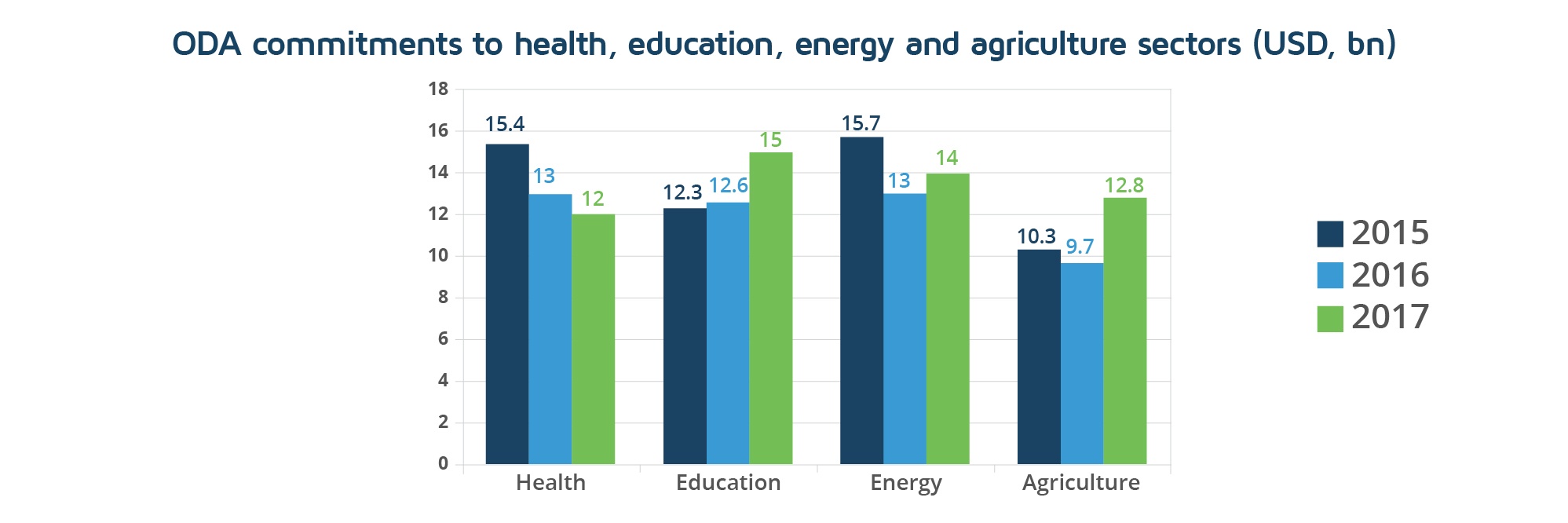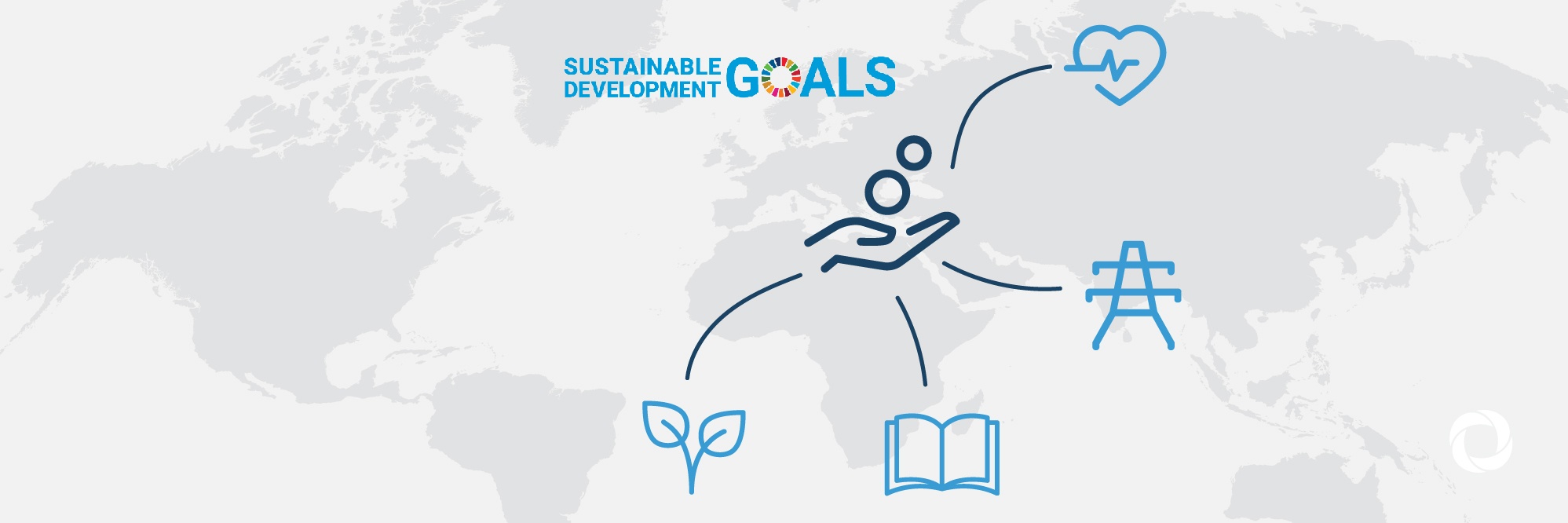The 2030 Agenda and the 17 Sustainable Development Goals (SDGs) were adopted in September 2015 at the historic United Nations (UN) Summit in New York. Having approved the new goals, all countries are expected to mobilize their efforts to end all forms of poverty, fight inequalities and tackle climate change. At the same time, the donor countries who provide official development aid (ODA) are expected to prioritize their aid flow and their ODA policies towards the sectors that relate to the SDGs.
The total ODA commitment provided by donors in 2017 amounted to US$ 196 billion. This article describes how much of this amount was targeted towards the health, education, energy and agriculture sectors and shows the aid dynamics according to the statistics available for the period between 2015 and 2017.

ODA commitments to the health sector decrease, improvements to the delivery care and more efficient technologies are required
The latest UN report reveals that the world still struggles in its efforts to make the inhabitants of the planet healthier and provide access to basic medical services and interventions. The International Development statistic underlines the fact that ODA commitments to the health sector have continuously dropped from 2015 when they totaled almost US$ 15.4 billion, to nearly US$ 12 billion in 2017 – a considerable decrease of 22%. At the same time, Goal 3 on the 2030-Agenda – Ensure healthy lives and promote well-being for all at all ages – to which the health sector is directly related, received almost 8% of the ODA commitments worth almost US$ 18.5 billion in 2017, making it the 5th most-financed of all 17 goals. The difference between the statistical data and the SDG related data is explained by the cross-sector nature of the SDGs and the double counting across its financing which is sometimes difficult to avoid.
Quality Education – the main driver for sustainable development
Education is key to fighting poverty and the foundation of sustainable development. Currently, almost 600 million children and adolescents lack minimum proficiency in reading and math, while 750 million adults are still illiterate. The official development aid commitments provided by official donors for the educational sectors in developing countries have grown by 21% in two years – from US$ 12.3 billion in 2015 to almost US$ 15 billion in 2017. The weight of Goal 4 – Quality Education – in the overall ODA commitments has grown from 7% in 2015 to 8% in 2017. This ranks Goal 4 in the same 5th place as Goal 3 among the 17 SDGs classified by ODA flows.
Official development aid for affordable and clean energy
According to the UN, over 3 billion people currently face certain difficulties in access to clean-cooking energy and instead use wood, coal, animal waste and charcoal as fuel for cooking. Official development aid commitments provided by donors for the development of the energy sector have been in slight decline since 2015, when they reached US$ 15.7 billion, to US$ 14 billion in 2017. The 11% drop may seem considerable for such a promising and pertinent sector, but the intermediate value of ODA for the year 2016 explains the trend when the official aid for the sector dropped to a record low of US$ 13 billion. Goal 7, adopted by the UN on its 2030 Agenda features very ambitious targets, such as to ensure universal access to affordable, reliable and modern energy services. However, the weight of the financing for the SDG 7 has achieved a middle range value of 7% from the total ODA that has been committed to the SDGs.
ODA for a sustainable and highly productive agricultural sector – the main measure to achieve Zero Hunger
The United Nations warn that almost 815 million people are hungry today, and another 2 billion will be undernourished by 2050. Developing sustainable agriculture, forestry and fisheries is the main strategy to decrease the number of underfed men, women and children, especially in the Sub-Saharan Africa region. Official development aid commitments by official donors for the agricultural, forestry and fishing sectors have achieved a positive trend during the 2015 – 2017 period, growing by almost 25% from US$ 10.3 billion to US$ 12.8 billion. Goal 2 – Zero Hunger – has moved up to the second most financed goal with a share of 10% and almost US$ 22 billion commitments in 2017.
At the beginning of 2019, the Organization for Economic Co-operation and Development (OECD) confirmed a 2.7% decrease in foreign aid flows, especially for the neediest countries and urged donor countries to reform their development funds finance to meet the 2030 pledge set by the UN.
On September 24-25th, 2019, Heads of States and Government have gathered at the UN Summit dedicated to follow up and review progress of the implementation of the 2030-Agenda and the 17 SDGs.
Follow the latest developments and trends of official development aid flows to the most important sectors on DevelopmentAid.

